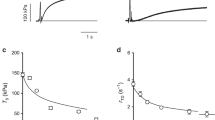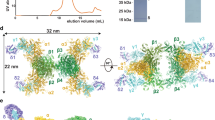Abstract
CARNOSINE phosphate was first synthesized by Severin, Georgievskaya and Ivanov1 by a method very similar in detail to that for creatine phosphate2. They showed that this method yields as a rule a diphosphate, both phosphate bonds being high-energy; but that the one which is not on the imidazole ring is more labile. In the presence of muscle extract the latter is transferred to adenosine diphosphate.
This is a preview of subscription content, access via your institution
Access options
Subscribe to this journal
Receive 51 print issues and online access
$199.00 per year
only $3.90 per issue
Buy this article
- Purchase on Springer Link
- Instant access to full article PDF
Prices may be subject to local taxes which are calculated during checkout
Similar content being viewed by others
References
Severin, S. E., Georgievskaya, E. F., and Ivanov, V. I., Biokhimia, 12, 35 (1948).
Ennor, A. M., and Stocken, L. A., Biochem. J., 43, 190 (1948).
Goodall, M. C., and Szent-Györgyi, A. G., Nature, 172, 84 (1953).
Bendall, J. R., J. Physiol., 121, 232 (1953).
Lorand, L., and Moos, C., Fed. Proc., 15, 121 (1956).
Kumagai, H., Ebashi, S., and Takeda, F., Nature, 176, 166 (1955).
Fleckenstein, A., Janke, J., Davies, R. E., and Krebs, H. A., Nature, 174, 1081 (1954).
Author information
Authors and Affiliations
Rights and permissions
About this article
Cite this article
GOODALL, M. Carnosine Phosphate as Phosphate Donor in Muscular Contraction. Nature 178, 539–540 (1956). https://doi.org/10.1038/178539b0
Issue Date:
DOI: https://doi.org/10.1038/178539b0
This article is cited by
Comments
By submitting a comment you agree to abide by our Terms and Community Guidelines. If you find something abusive or that does not comply with our terms or guidelines please flag it as inappropriate.



